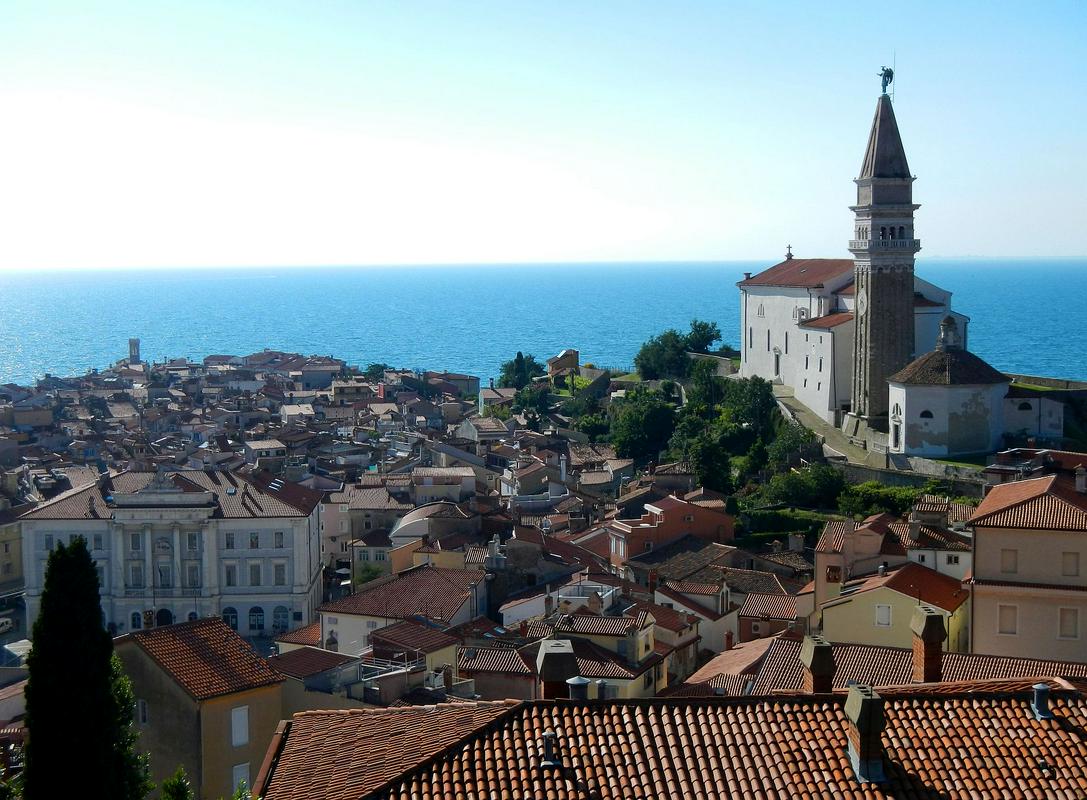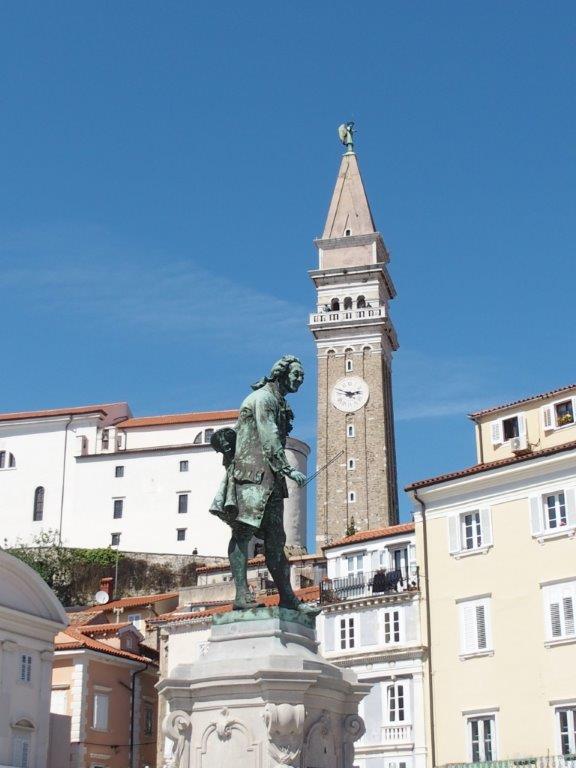

A church first stood on the spot in the 12th century, but it was replaced by a much larger building in the 14th century. Just for the occasion, nine bishops traveled to Piran, where they consecrated the new Church of St. George.
By the 16th century, the church got a completely new Renaissance appearance with decorations made by stonemason Bonfante Torre. The look was thoroughly Venetian; in fact, the free-standing bell tower was designed as a small-scale replica of the just-completed St. Mark’s Cathedral in Venice. The new façade also bore a Venetian imprint, having been based on the architectural designs of Andrea Palladio. The church’s frescoes were painted by some of the best Venetian masters.
The reconstruction officially ended in 1637. Twenty-three years later, a baptistry was built next to the church. It now holds several medieval sculptures, including a spectacular sculpture of Christ dating back to the 14th century.
In the 18th century, three stone altars and two sculptures were added to the church. One was silver-plated, the work of Piran’s silversmiths. Another addition was an elaborate organ made by Petar Nakić, a Franciscan monk from Dalmatia and a respected organ builder and designer. (The organ barely survived World War I, when some of its tubes were melted down to create weapons.)
One problem that has endangered the church from its early years was the very ground it was built on, which turned out to be worryingly unstable. This issue had concerned the authorities for a long time, and the foundations had to be fortified by newly constructed stone arches whose construction began in the 17th century, but wasn’t finished until the early 19th century. After Slovenia became independent, further work on the church’s foundations prevented the church’s bell tower from becoming Slovenia’s equivalent of the Leaning Tower of Pisa.
Today, the Church of St. George is not just one of Piran’s most recognizable architectural icons; it also serves as a reminder of the historic bonds between Slovenia’s coastal jewel and the city of Venice across the northern Adriatic Sea – bonds that are becoming ever-more significant in the newly united Europe of the 21st century.

































































